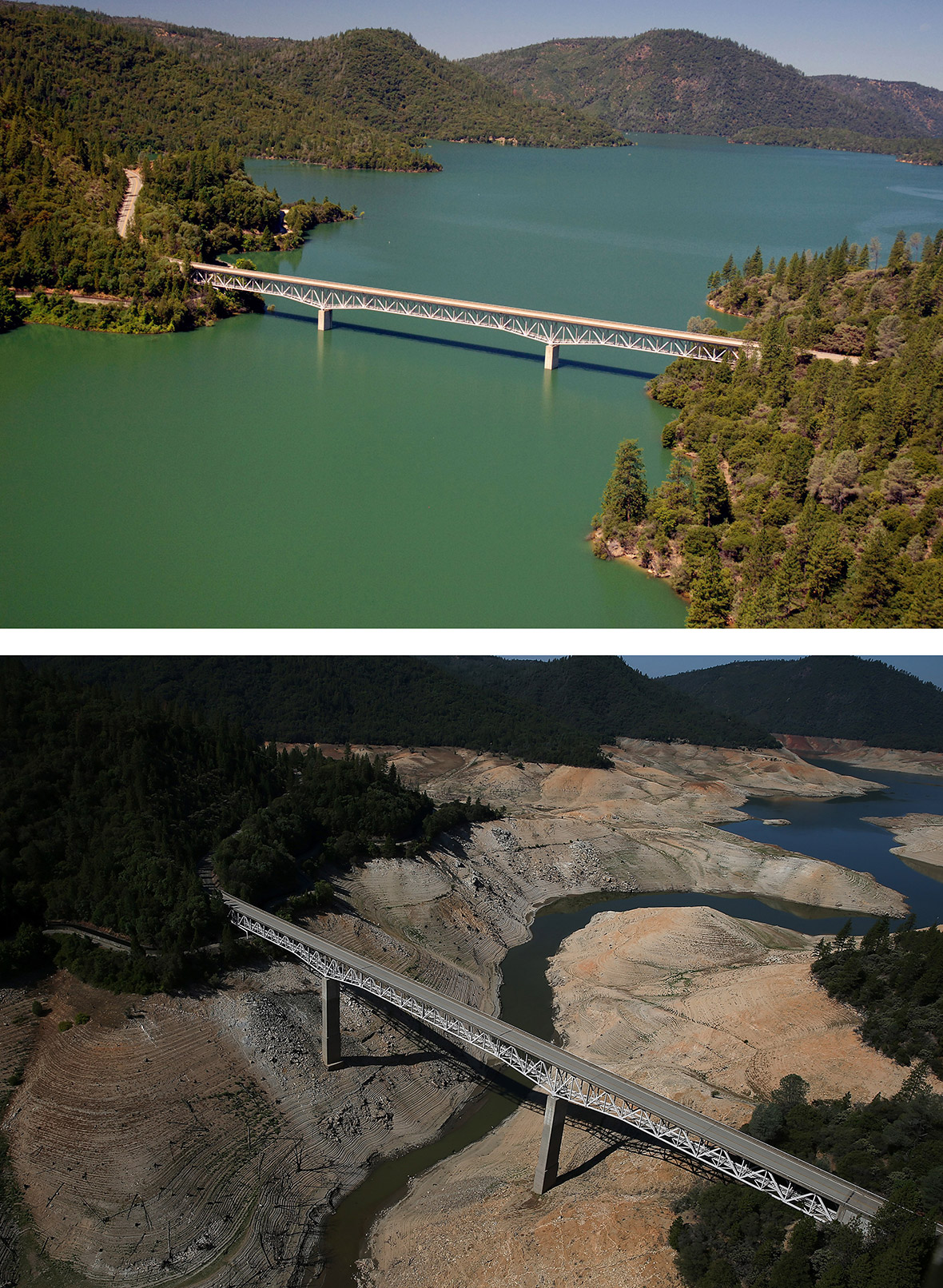

"The Danger Of Science Denial"
TED Talk by Michael Specter
8 fascinating images explain California’s dangerous drought
California has entered its fourth year of a historic drought, and residents and businesses are desperately trying to slash their water use to meet new mandatory restrictions. Here are eight fascinating graphics that explain some of the forces behind the epic drought.
1. California is one of the most-drought stricken regions of the U.S. This map, also from Brookings' Hamilton Project, shows how the drought was concentrated in the southwest, including large swathes of California, in July 2014.
2. Things have gotten worse since then. The map below shows that much of central California, including large stretches of the Central Valley, the location of most of California's agriculture, were classified as having an exceptionally severe drought as of March 31.
3. You don't need a PhD to see why California is in trouble. The satellite images below, from February 2011, 2013 and 2014, show how dramatically the snowpack has shrunk in the Central Valley and the Sierra Nevada mountains. Folsom Lake, Comanche Reservoir, and other bodies of water have also clearly been diminished.
Snowpack provides about one-third of the water used by California's cities and farms, and the Sierra snowpack has hit its lowest level on record since measurements began in 1950.
4. California's water crisis isn't really due to its people. On a per person basis, Californians don't use as much water as some other states. This map, from a report from the Brookings Institution’s Hamilton Project, shows domestic water use, which includes things like showering, washing clothes and dishes, and watering lawns, in gallons per person per day in 2005, the most recent year available. Californians used 124 gallons per person per day, near the top of the list, but behind states like Nevada, Idaho, Utah, Wyoming or Texas.
California's high water use is mainly due to one thing: outdoor watering. More than half of the state's residential water is used outdoors, according to the report. The report notes that per capita water use in California has declined since 2005, due to pricing incentives and mandatory water-saving toilets and showerheads.
6. Almond shaming is justified. You've probably heard that almonds consume a lot of water -- about a gallon for each tiny nut. The truth is that, ounce for ounce, almonds aren't the most water-hungry crop in California (more on this later). Yet California's almond industry is so massive -- the state grows 82 percent of the world's almonds, the majority of which are exported -- that the industry is one of the state's largest water users, sucking up about 10 percent of the state's water.
This chart by Cristina Rivero of the Washington Post shows the total value in 2013 of the crop. The color of the bar indicates how many trillions of gallons of water that crop used in 2010, the most recent data available. You can see that almonds are both thirstier than many other crops and a far larger industry.
7. But almonds aren't the only offenders. Agriculture overall accounts for about 80 percent of California's water use, so it's clear that almonds aren't the only bad guys. As the Post's Philip Bump points out, beef requires even more water ounce for ounce, since the cows' feed must also be grown and watered. California is home to about 5 million cattle, less than only Texas, Nebraska and Kansas.
The chart below by designer Timm Kekeritz shows the water footprint, the volume of fresh water in liters required to produce various crops. Each drop represents 50 liters of virtual water. (Click on the graphic to expand it.)
While almonds aren't included here, you can see how much more water meat, leather and paper require than other vegetables and fruits. It requires an incredible 4,650 liters (1228 gallons) of water to produce one steak, mostly because of the huge amount of grain and roughage that is fed to young beef cattle. One steak requires about the same amount of water to produce as 100 oranges or 500 sheets of paper.
8. Power generation is another major hidden consumer of water. It actually requires more water to generate the electricity that the average American household uses than the total amount of water we use in our homes for everyday tasks like washing dishes and clothes, showing, flushing toilets and watering lawns and gardens, according to the Union of Concerned Scientists. The chart below from Brookings' Hamilton Project shows just how much water is used for power generation nationwide.
California uses more saltwater than other states to produce power; in 2005, power plants used 12.6 million gallons per day of saline water and 50 million gallons per day of fresh water, according to California's Department of Water Resources. Even so, its freshwater withdrawals for power generation are substantial.
And clean energy doesn't necessarily have an advantage: Wind farms don't use any water, but some concentrating solar power plans consume more water per unit of electricity than the average coal plant.
Ana Swanson writes for Know More and Wonkblog.








No comments:
Post a Comment